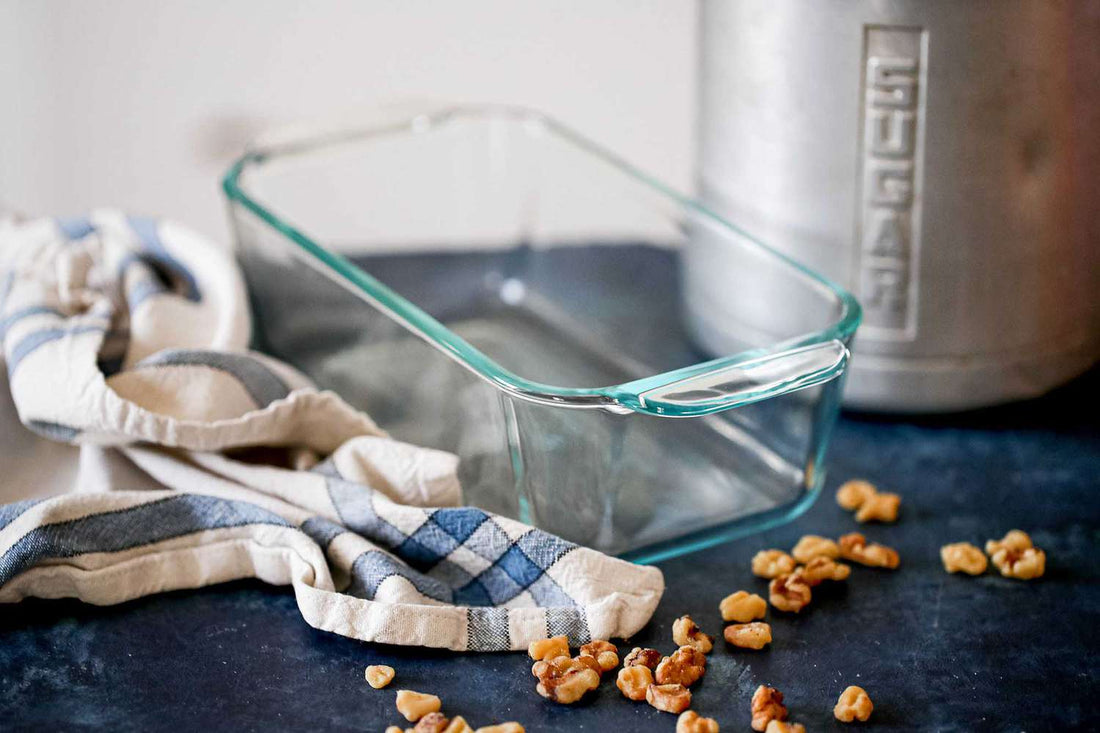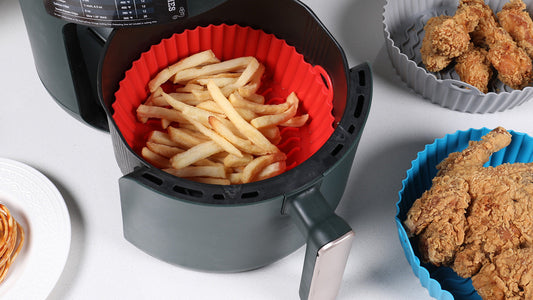Discover the secret to perfect homemade breads and cakes with the right bakeware! Wondering, what is a glass loaf pan and how it compares to metal? This guide reveals everything from baking tips to recipe tweaks helping you choose the ideal pan for delicious, eco-friendly, and beautifully baked results every time.
What is a Glass Loaf Pan?
A glass loaf pan is a baking vessel made primarily from borosilicate glass, known for its durability and resistance to thermal shock. Unlike metal pans, glass pans are eco-friendly and non-reactive, meaning they do not interact chemically with acidic ingredients, preserving the pure flavor of your baked goods. This aligns well with sustainable and health-conscious values, such as those promoted by Kimecopak, which emphasize environmentally responsible kitchenware. This guide will explore the differences between glass and metal loaf pans, their baking performance, and when to choose one over the other to achieve the best results with your recipes.

Glass Loaf Pan vs Metal: Which One is Better?
When searching for “glass loaf pan or metal,” bakers often want to know which material produces superior baking results and suits their cooking style best. Both have unique properties affecting heat conduction, baking time, and the texture of baked goods.
Heat Conductivity & Baking Time
Glass heats up more slowly than metal but retains heat longer once hot. This means baking in glass pans can take a bit more time to reach the desired temperature, but the heat stays consistent throughout the baking process. Metal pans, especially aluminum, heat quickly and cool down faster, which can lead to faster baking times but less heat retention after removal from the oven.
Effects on Recipe Results
Metal pans tend to produce crispier, well-defined edges due to their rapid heat conduction, ideal for recipes like brownies or cakes that benefit from a crunchy crust. Glass pans, in contrast, yield softer edges and a gentler bake, which suits delicate breads and desserts. Because glass is non-reactive, it won’t alter the taste of acidic recipes, whereas metal pans might sometimes impart a metallic flavor or react with acidic ingredients.

What Are Glass Loaf Pans Used For?
Glass loaf pans are versatile and commonly used for baking banana bread, pound cakes, casseroles, and various baked desserts. They excel in recipes that require slow, even baking and benefit from heat retention after baking. Their transparency also allows bakers to visually monitor browning and caramelization without opening the oven.
When to Use a Glass Loaf Pan
Use a glass loaf pan when you want a slower, gentler bake that retains warmth well after baking. It’s especially useful when visual monitoring of the baking process is important, such as watching the caramelization of a crust or ensuring even doneness in delicate cakes.
When to Use a Metal Loaf Pan
Metal pans are preferable for recipes needing quicker, more even baking with sharp, crisp crusts, like brownies and certain cakes. They are lightweight and durable, making them ideal for frequent bakers who prioritize speed and convenience
Adjusting Recipes for Different Pan Types
Baking in Glass
When baking with a glass loaf pan, it’s important to reduce the oven temperature by 25°F (about 15°C) compared to what the recipe calls for if it was designed for metal pans. This adjustment prevents the edges from overbaking since glass retains heat longer and continues cooking even after removal from the oven. Because glass heats more slowly, you should also extend the baking time by 5 to 10 minutes to ensure the center cooks thoroughly without burning the edges. Keeping a close eye on visual cues like browning and bubbling is especially helpful with glass pans to avoid undercooked centers or overly crisp edges.
Baking in Metal
Metal pans, particularly those with a dark or non-stick coating, conduct heat quickly and can brown baked goods faster. If using a dark-coated metal pan, you may need to reduce baking time slightly to prevent burning or over-browning. Light-colored or shiny metal pans typically require little to no adjustment in baking time or temperature. Metal pans generally bake more evenly and faster, so following the recipe’s original time and temperature is usually safe, but always monitor your bake to adjust as needed.
Best Pan Types for Specific Recipes
Brownies
Metal loaf pans are preferred for brownies because their fast heat conduction creates crisp, clean edges and a chewy texture that many bakers seek. Glass pans tend to produce softer edges and can cause the center to bake unevenly or remain undercooked if not adjusted properly. If using glass for brownies, reduce the oven temperature by 25°F and extend baking time, but be prepared for a slightly different texture with less crispness on the edges.
Banana Bread / Pound Cake
Glass loaf pans are ideal for banana bread and pound cake because their gentle, even heat promotes a moist crumb and prevents the crust from becoming too hard. The heat retention of glass helps these denser, slower-baking batters cook evenly through the center without over-browning the edges. Glass also allows you to monitor browning visually, which is helpful for these recipes.

Blondies, Bars, Cookies
For blondies, bars, and cookies, metal pans are recommended due to their quick and even heat distribution. This helps achieve the desired crispness and golden bottoms that are difficult to replicate in glass. Metal pans also reduce baking time, which is beneficial for recipes that require shorter, high-heat baking.
How Heat Conductivity Affects Baking Results
Heat conductivity is the rate at which a material transfers heat to the food. Metals like aluminum conduct heat rapidly, leading to faster and more even baking. Glass, on the other hand, heats slowly but retains heat longer, acting like a heat reservoir. This means glass pans continue cooking the food even after removal from the oven, which can cause overbaking if not accounted for. The slower heat transfer of glass can result in uneven baking if the center takes longer to cook, while metal pans can sometimes cause edges to over-brown if baking times are not adjusted. Understanding these properties helps bakers avoid common issues like undercooked centers or burnt edges.
Professional Baking Tips from Experts
- Avoid thermal shock with glass pans: Never place a cold glass pan directly into a hot oven or put a hot glass pan on a cold surface to prevent cracking.
- Greasing pans: Glass pans often require less greasing than metal because their smooth surface reduces sticking, but always check your recipe. Metal pans, especially non-stick ones, still benefit from proper lining or greasing.
- Versatility: If choosing only one pan type, a metal loaf pan is generally more versatile for a wide range of recipes due to its faster, even baking and durability.
- Monitor baking progress visually: Glass pans allow you to see the sides and bottom of your bake, which can help prevent over- or under-baking.
- Best Glass Loaf Pans to Buy
For those seeking the best glass loaf pan in Canada, top options include:
| Brand | Key Features | Oven Safety | Extras |
|---|---|---|---|
| Pyrex | Borosilicate glass, durable, clear sides | Oven, microwave safe | Some models include lids |
| Anchor Hocking | Heat-resistant glass, ergonomic grip handles | Oven safe | Available with lids |
| OXO | Tempered glass, non-slip handles | Oven safe | Dishwasher safe, with lids |
These brands offer reliable heat retention, easy cleaning, and sturdy construction, making them excellent choices for eco-conscious bakers who prefer glass bakeware.
Conclusion
Choosing between glass and metal loaf pans depends on your baking goals and recipe types. Glass pans provide gentle, even heat and are ideal for moist breads and cakes, especially those with acidic ingredients. Metal pans offer faster heat conduction, crisp edges, and are more versatile for quick-baking recipes. Adjusting temperature and baking times when switching between these materials is essential for perfect results. Embracing eco-friendly glass bakeware not only supports sustainable cooking but also enhances your baking experience with its unique properties.
FAQ
Can I put a glass loaf pan in a preheated oven?
Yes, but avoid sudden temperature changes to prevent thermal shock. Always place the glass pan in the oven before preheating or allow it to warm gradually.
Why is my bread undercooked in the middle?
If using a glass pan, it may be due to slower heat penetration. Lower the oven temperature by 25°F and extend baking time to ensure even cooking.
Can I freeze and bake in the same glass pan?
Generally, yes, if the glass is oven-safe and designed for thermal shock resistance. However, avoid moving the pan directly from freezer to hot oven to prevent cracking.
Is it okay to bake brownies in a glass loaf pan?
Yes, but expect softer edges and longer baking times. For crispier edges, metal pans are preferable. Adjust temperature and time accordingly when using glass.



